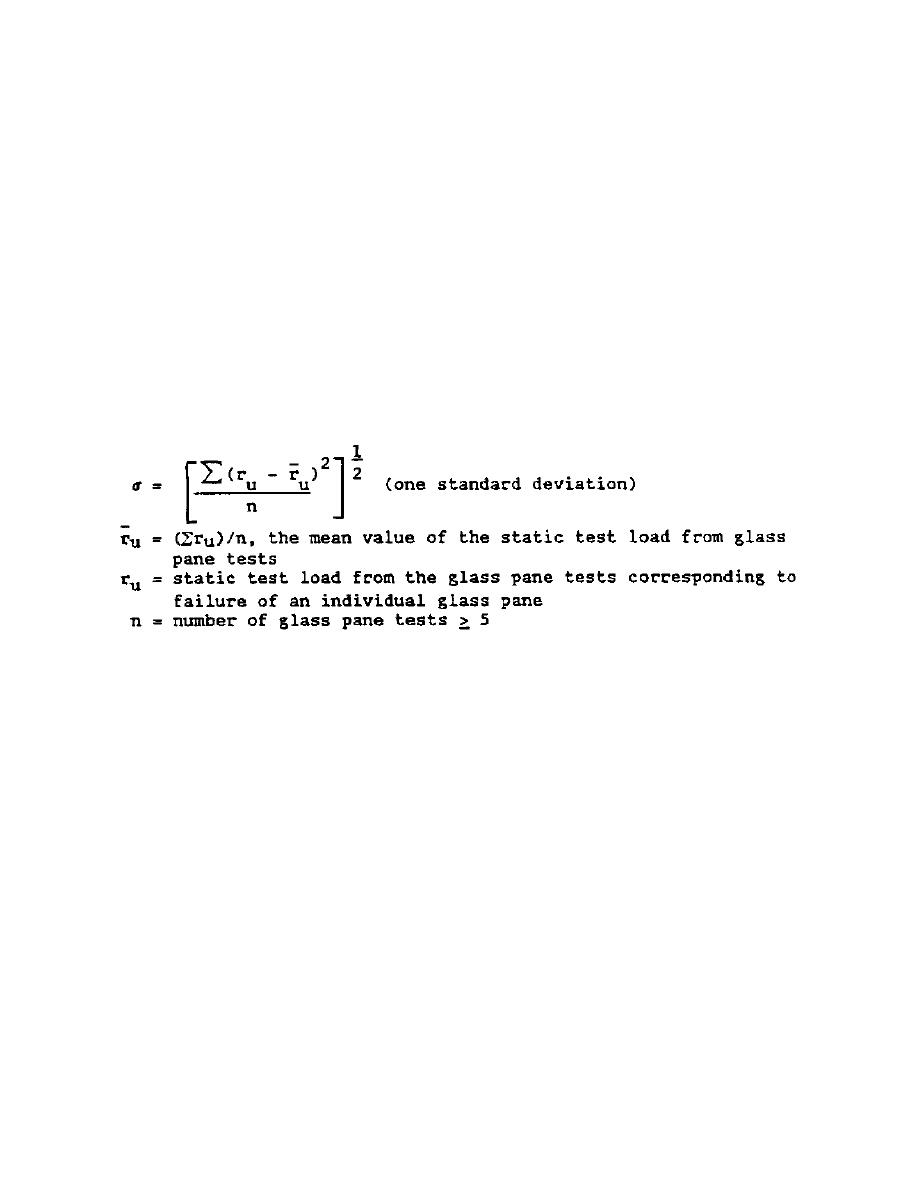

Custom Search
|
|

|
||
 (2) The proof test shall measure the reliability of the window to
develop a minimum capacity or breaking strength for the glass panes.
Minimum breaking strength is defined as the mean value of the static test
load capacity, ru, for the largest glass pane in the window. The
value, ru, shall be based on a minimum of five glass pane tests. In
each glass pane test, the load shall be applied uniformly over the face of
the glass pane, all edges of the glass pane shall be housed in their
adjoining metal frame with rubber gaskets installed, and the metal frame
shall be supported continuously along its length on rigid supports that are
restrained against deflection and rotation. The window in the test set-up
for the proof load test shall be fastened by its anchorages to a rigid
surround that simulates the adjoining masonry walls.
(3) The proof load test shall involve subjecting the entire exterior
face of the window, including glass panes, metal frames and insulated metal
panel (where applicable), to an increasing uniform static load. No pane of
glass shall break and the window frame shall not break from its anchorages
under a uniform static pressure load less than (ru-[sigma]), where;
(4) The specific test window that satisfactorily passes the proof
load test (no breakage) must also pass a rebound load test before the design
is considered acceptable. The rebound test shall consist of a series of
preliminary calculations to determine whether the actual test is required.
Using either physical properties of the glass or the data obtained from the
first part of this test (glass pane test), the fundamental period of
vibration of each glass pane is calculated when supported along all edges on
non-deflecting supports. Using the period and design blast loading, the
maximum rebound stress (or maximum rebound deflection), if any, occurring in
each pane of glass during the time interval when the positive pressure phase
of the design blast pressure loading acts on the window, is calculated. A
four percent viscous damping may be assumed in the calculations. For each
glass pane, the equivalent static negative pressure (uniformly distributed
over the face of the glass) that would produce the maximum rebound stress,
is calculated. The maximum static negative pressure for any pane of glass
is defined as the rebound proof load, ru. If analysis shows that no
glass pane will rebound (i.e., the rebound proof load >/= 0), then the
rebound load test is not required and the window design that passed the
proof test should be considered adequate. However, if the analysis shows
that any glass pane will rebound, (i.e., rebound proof load < 0), then the
window design must pass the rebound load test.
2.08-235
|
 |
|
 |
||